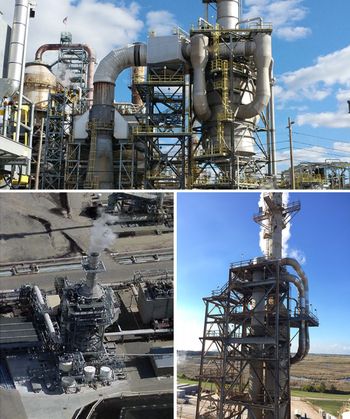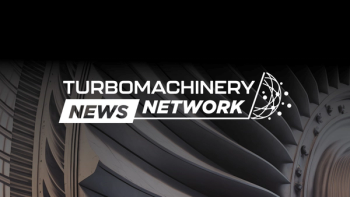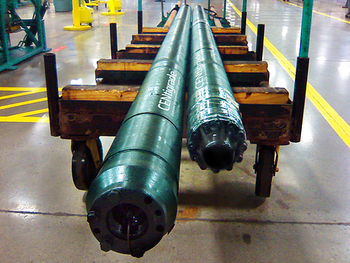
- July/August 2025
- Volume 66
- Issue 4
Beyond the First Critical Speed: Do All Rotors Need High-Speed Balancing?
Key Takeaways
- High-speed balancing should be based on detailed rotordynamic behavior, not just critical speed crossing.
- API 684 and ISO 21940-12 stress the importance of comprehensive rotordynamic analysis for flexible rotors.
High-speed balancing for rotors operating above their first critical speed isn’t always necessary; it depends on a detailed analysis of the rotor’s dynamic behavior and modal response at operational speeds, not a blanket rule.
In high-speed rotating machinery, a common misconception exists: Every rotor that operates above its first critical speed requires high-speed balancing (HSB). Although this assumption may seem intuitive, it overlooks the dynamic complexities and oversimplifies the matter. The truth is more nuanced. This paper reviews international standards and expert literature, combining them with practical engineering experience to evaluate when high-speed balancing is truly required. The analysis reveals that the decision should be based not merely on crossing a critical speed, but rather on detailed rotordynamic behavior and modal response at operational speeds.
Rotors in turbomachinery are typically classified as either rigid or flexible. Rigid rotors do not show significant bending at operating speeds, while flexible rotors do, often operating above their critical speeds. Balancing is essential to minimize imbalance-induced vibration, especially in high-speed systems. A common question in the industry arises: If a rotor operates above its critical speed, is high-speed balancing always required?
To answer this question, let’s review industry standards, influential literature, and practical case studies that provide clarity for designers, maintenance professionals, and vibration analysts.
REVIEW OF RELEVANT STANDARDS AND LITERATURE
API 684: This standard emphasizes the importance of conducting detailed rotordynamic analysis when dealing with flexible rotors, particularly those with operating speeds that are close to their critical speeds. It clarifies that the proximity of a rotor’s operating speed to its critical speed does not automatically necessitate high-speed balancing. Rather, the analysis should focus on understanding the rotor’s dynamic behavior, especially at its operating speed, to facilitate informed decisions about balancing methods.
The standard specifies that the behavior of flexible rotors can vary significantly based on their operating conditions and the complexity of their dynamic responses. Therefore, a more comprehensive approach involving rotordynamic modeling is necessary to ensure that the rotor’s vibration characteristics, including resonance effects and critical speed behavior, are accurately evaluated.
Furthermore, API 684 highlights the critical role of the bearing length-to-diameter (L/D) ratio in selecting appropriate dynamic coefficients for journal bearings. This factor is essential for accurately modeling the bearing’s influence on the rotor’s dynamic behavior. The L/D ratio affects the bearing’s stiffness and damping properties, which are vital for predicting the rotor’s response under various operating conditions. Proper consideration of this ratio ensures that the rotor-bearing interaction is modeled precisely, leading to improved predictions of rotor performance and more effective balancing strategies.
API 687: This repair standard outlines the conditions under which high-speed balancing (HSB) should be considered for rotors. While HSB is generally not necessary for compressors and turbine rotors, there are specific circumstances where it is recommended, including, but not limited to, rotors that:
Exhibit high vibration as they pass through critical speeds.
- Accelerate slowly through critical speeds.
- Run near or on a critical speed.
- Installed in inaccessible locations, such as offshore.
- Cannot be tested in their intended casing before installation.
- Previously high-speed balanced and not disassembled.
This also includes rotors that are sensitive to imbalance, long and flexible, and used in extremely critical services.
Additionally, it states that a rotordynamic analysis of the rotor and its support system should be conducted before attempting a HSB. This analysis assists in determining the rotor mode shape and the optimal location for balance weights. The standard emphasizes that due to potential differences in the stiffness of the balancing machine bearing pedestals compared to actual field conditions, a revised balancing speed may be needed to account for variations in the critical speed observed in the field.
ISO 21940-12: In ISO 21940-12, determining whether a rotor behaves as rigid or flexible is not solely based on the ratio of the first critical speed to the maximum operational speed. Instead, several factors and methods must be evaluated to decide on the appropriate balancing method accurately.
Key Factors:
- The ratio of the first bending resonance to the maximum operating speed.
- Stiffness of the bearing system and temperature effects.
- Rotor deformation due to speed and centrifugal force.
- Mass distribution, balancing locations, and support methods.
- Modal unbalance level.
Suggested Methods for Determining Rotor Behavior:
- Consult the manufacturer or operator to gather information about the rotor’s characteristics and the recommended balancing method.
- Analyze the ratio of the first resonance to the operating speed; if the first resonance is at least 1.5 times the operating speed, the rotor is generally considered rigid.
- Experimental testing of vibration changes with speed variations helps identify sudden shifts in vibration.
- Flexibility testing compares vibration responses at different positions and determines the rotor’s flexibility behavior.
- Dynamic modeling of the rotor if precise stiffness and damping data are available.
By combining these methods with empirical data, the rotor’s behavior can be accurately determined, and the appropriate balancing method can be selected.
MACHINERY VIBRATION: BALANCING
Victor Wowk emphasizes the importance of modal response and suggests that, rather than solely focusing on crossing the critical speed, the vibration behavior of the rotor at operating speeds should be the primary focus during the balancing process. He states that the critical speed is merely an initial indicator, and changes in vibration at operating speeds, along with the dynamic behavior of the rotor under these conditions, serve as the true indicators of the balance state and the need for further adjustments.
In this context, Wowk noted that the dynamic behavior of the rotor at operating speeds, which usually involves crossing the critical speed, can provide more precise information about balance issues and rotor dynamics under real-world conditions. This approach, by examining the rotor’s vibration response at operating speeds and taking into account factors such as mass distribution, centrifugal force, bearing stiffness, and the effect of temperature, can help identify more complex problems that are not observable at critical speed.
In other words, while crossing the critical speed may indicate some issues, evaluating the rotor’s vibration behavior at operating speeds is essential for a more accurate analysis and decision about the need for balancing, as these speeds reflect the system’s actual performance under operational conditions.
CRITERIA AFFECTING THE NEED FOR HSB
- Drawing on the points mentioned and practical experience in this field, several factors affect whether HSB should be performed:
- Dynamic amplification: If the amplification factor at operating speed is low, even flexible rotors may not require HSB.
- L/D ratio: Higher Rotor length-to-diameter ratio values (FIGURE 1) suggest flexibility but are not alone sufficient (FIGURE 2).
- Modal shape: If the dominant mode at operating speed does not significantly excite unbalance response, HSB may be unnecessary.
- Bearing stiffness and support structure: Softer supports increase sensitivity to imbalance.
- Criticality of the machine: Machinery in critical services (e.g., gas compressors in petrochemical plants) may justify conservative approaches.
PRACTICAL ENGINEERING PERSPECTIVE
Based on field experience and practical evidence, certain rotating machines—such as turboexpanders and centrifugal compressors— may operate above their first critical speed without requiring HSB due to favorable modal shapes and stable dynamic behavior at actual operating speeds. Conversely, there have also been instances where rotors operating below their first critical speed (particularly when the operating speed is 10 - 15% less than the first critical speed) exhibited vibration patterns that necessitated high-speed balancing due to unfavorable dynamic characteristics at operating speeds (FIGURE 3).
The author’s involvement in rotordynamic analysis during the commissioning and maintenance of large gas turbines and compressors demonstrates that decisions regarding HSB must be made on a case-by-case basis, based on actual vibration responses rather than a generalized threshold.
Avoiding unnecessary HSB in suitable conditions has resulted in reduced costs and downtime while maintaining operational reliability.
CONCLUSION
The necessity of HSB cannot be determined solely by general criteria, such as whether a rotor operates above its first critical speed. Instead, this decision should be based on a thorough assessment of the rotor’s dynamic behavior under actual operating conditions. Factors such as modal shape, amplification factor, bearing stiffness, support conditions, and the criticality of the equipment application all play a crucial role in this decision.
Field evidence has shown that some rotors, despite operating above their critical speed, do not require high-speed balancing due to their favorable dynamic characteristics. Conversely, there are cases where rotors operating below the critical speed have exhibited unfavorable vibration responses that necessitated HSB. Therefore, adopting a one-size-fits-all approach may lead to unnecessary maintenance actions or overlook hidden reliability risks.
Recommendations:
- Conduct thorough rotordynamic analysis during the design, commissioning, and troubleshooting phases.
- High-speed balancing should be conducted only when the vibration behavior at operating speed warrants it, rather than relying solely on critical speed comparisons.
- Utilize experimental testing, such as vibration tests and flexibility analysis, to confirm or rule out the necessity for HSB.
- Consult with the equipment manufacturer to obtain expert opinions on the necessity of HSB and consider design adjustments or specific recommendations.
- In high-criticality applications (e.g., gas turbines and petrochemical compressors), take a cautious yet evidence-based approach.
- Document and analyze each case individually to enhance organizational knowledge and improve future balancing strategies.
- Ultimately, the decision regarding HSB should be a case-specific engineering decision, rather than adhering to rigid, generalized rules.
Mohammadreza Galeban is a Condition Monitoring Supervisor at the Persian Gulf Bidboland Gas Treating Co.
REFERENCES
1. API 684:2019 “ Rotordynamic Tutorial: Lateral Critical Speeds, Unbalance Response, Stability, Train Torsionals, and Rotor Balancing.”
2. API Standard 687:2001, “Rotor Repair,” 3rd Edition.
3. ISO 21940-12:2016, “Mechanical vibration — Rotor balancing — Part 12: Procedures and Tolerances for Rotors With Flexible Behavior.”
4. Wowk, Victor. “Machinery Vibration: Balancing”, McGraw-Hill,1st Edition, 1998.
Articles in this issue
5 months ago
Turbomachinery International: July/August 2025Newsletter
Power your knowledge with the latest in turbine technology, engineering advances, and energy solutions—subscribe to Turbomachinery International today.




